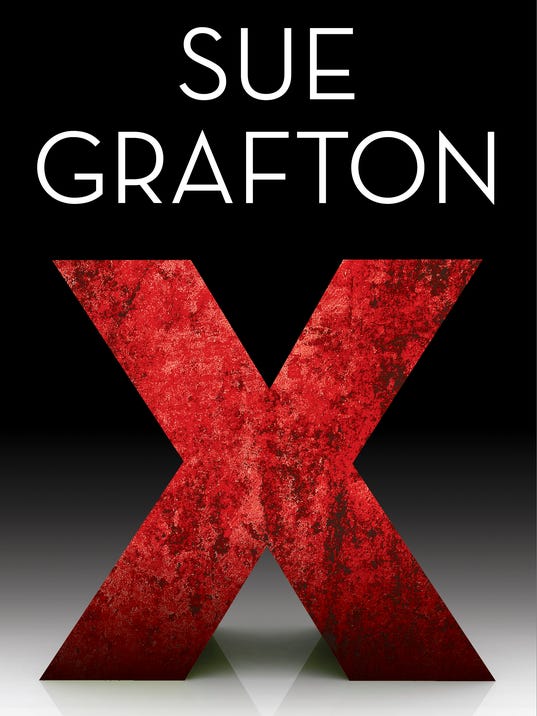I have always felt a kinship with Kinsey Millhone, although I could never follow her regimen of running three miles a day (five days a week), and I have no training in martial arts or marksmanship. I appreciate to the fullest Kinsey's irreverence for most social mores and I endorse her minimalist lifestyle: small cars, a casual wardrobe (with one good black dress/tunic for emergencies), and readiness to travel at the drop of a hat. I love peanut-butter and pickle sandwiches, but am not addicted to the fast food Kinsey shamelessly devours in her car. Since high school, 3x5 index cards have been my preferred medium for important notes and lists, and Kinsey always carries a big bundle of cards in her shoulder bag.
Having spent memorable times in Santa Barbara, I enjoy the settings of Sue Grafton's novels. Her fictional Santa Teresa and neighboring cities including Colgate, Montebello, Perdido, and Cottonwood are thinly veiled versions of towns in the greater Santa Barbara/Ventura area. When Kinsey travels outside this area, 'real' place names are used: Reno, San Francisco, Bakersfield, Los Angeles, Beverly Hills, Culver City.
Getting to know landmarks and characters through a series of novels makes a reader feel at home. This is true in Anthony Trollope's Barsetshire and Caroline Keene's* River Heights, as well as in Sue Grafton's Santa Teresa. Kinsey's friends are my friends: lovable landlord Henry Pitts, restaurateur Rosie, confidante Vera, the enigmatic Dietz, and a cohort of officers from the Santa Teresa Police Department.
My kinship with Sue Grafton is simpler in a sense, but more complex in others. She was born in 1940, I in 1941; we came along at the tail end of the 'silent generation (1925-1942),'** born before Pearl Harbor yet shaped by our parents' experiences of the Great Depression and World War II.

I have watched Grafton age gracefully through book-jacket photos taken from 1983 to the present, and in each one she looks like someone I would meet at a community event or remember from my high school class of 1958. Just look at those dimples!
With this image in mind it was fun to spot Grafton's dimples on the face of evil Edna Shallenbarger, an embezzler who skips bail to appear in X. Kinsey tells us: "She smiled with her lips together, creating a dimple in each cheek. The effect was curious. Malice surfaced and then disappeared" (pp. 154-55). I sensed that Sue Grafton has used her dimples to great advantage throughout her life, and I now I will continue to look for dimples on the faces of characters in her fiction.
It's tempting, but I do not intend to count the ways that reading Kinsey and Me has informed -- and will continue to inform -- my reading and re-reading of the Kinsey Millhone mysteries, but I do want to comment on the 'me too' effect in Grafton's X. Don't worry. No 'spoiler alert' is needed.
X is set during a serious drought that lasted from 1986 to 1991, and all the households in Santa Teresa are being asked to cut back voluntarily on their water use. Henry Pitts is trying hard to comply by taking out his thirsty lawn, putting in a drip irrigation system, and learning about gray water. At times I felt like I was reading my own blog:
Weather pundits warn that California's drought is not over . . . . Water-saving measures abound: days and hours (minutes!) of watering time are severely limited, cities pay $2.00 per square foot and more for residential lawn removal, and courses in xeriscaping appear in college extension catalogs. People joke about the 'water police.'But where Henry's compliance is still voluntary, we in Culver City have moved to the mandatory level. A fine of $250 will be levied any time we are caught running potable water outdoors, at times other than before 8:00 a.m. or after 6:00 p.m. on Tuesdays and Saturdays. One neighbor in particular likes to phone the water company whenever she spots a violation.
From time to time I have written about my preoccupation with organizing our household effects. Sandra Felton, one of my current gurus in this area, recommends a regimen of three C's to use when decluttering: consolidate, containerize, condense. Following this procedure, I am currently consolidating and containerizing a vast number of things -- mostly yarn and other craft supplies -- into an indexed series of Bankers Boxes (about 30 so far, with no end in sight).
When Kinsey talks about assembling Bankers Boxes I once again feel that I am astride that fine line between fiction and fact. Kinsey uses her knowledge of Bankers Box construction (and deconstruction) to find an important clue about X's worst villain, and I can see just exactly how she did it. Luckily, I don't think I'll need to follow her example. But who knows? Someday I might want to conceal the details of a secret yarnbombing project. Where better than between layers of cardboard in Box Y?
- - - - - -
* collective pen name of a large group of underpaid ghostwriters working through the Stratemeyer Syndicate to create the Nancy Drew mystery series.
** "too young to see action in World War II and too old to participate in the fun of the Summer of Love." See NPR's How Generations Get Nicknames.

